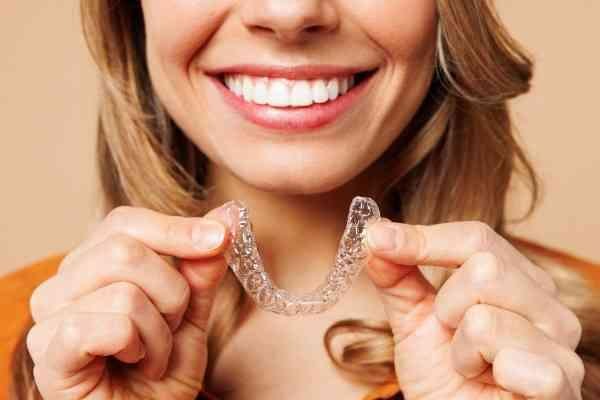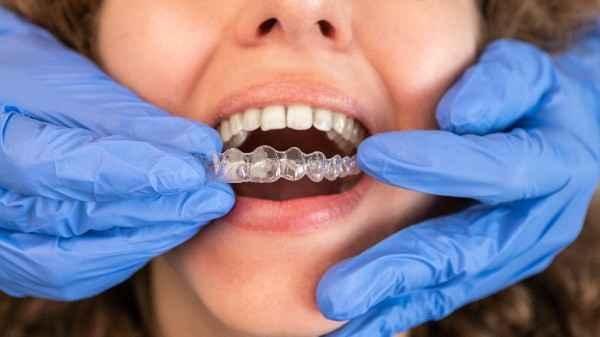Invisalign has quickly become one of the most popular alternatives to traditional braces. Its clear, removable aligners offer a subtle way to straighten teeth without the look of metal wires and brackets. But the question many people have is: Who actually qualifies for Invisalign? Not everyone is a perfect candidate, and understanding the factors that determine suitability is important before committing to treatment. Let’s have a friendly chat about what to expect and how to know if Invisalign could work for you.
What Exactly Is Invisalign?
Invisalign uses a series of custom-made, clear plastic aligners to gently move your teeth into the right position. Each set is designed to make slight adjustments over time until your smile reaches the desired result. The aligners are removable, so you can take them out for eating, drinking, brushing, and flossing.

This treatment appeals because of its discreet look and convenience, but it isn’t always the ideal solution for every dental issue.
Who Is Invisalign Best Suited For?
Mild to Moderate Orthodontic Issues
Invisalign is most effective for mild to moderate misalignments. It works well when teeth need to be straightened slightly or gaps closed. Common dental problems Invisalign can address include:
- Crowding: Teeth that overlap or sit too close together.
- Spacing: Gaps or spaces between teeth.
- Overbite: When upper front teeth overlap too much over lower teeth.
- Underbite: Lower teeth protrude beyond upper teeth.
- Crossbite: Some upper teeth bite inside lower teeth.
- Open Bite: Front teeth don’t meet when the mouth is closed.
The American Association of Orthodontists reports that Invisalign is suitable for approximately 75% of orthodontic cases, particularly those without severe structural issues.
Age Matters: Teens and Adults
Invisalign works for both teenagers and adults. Teen treatment includes features like compliance indicators, small blue dots on aligners that fade with use to help orthodontists check if they’re being worn enough. This feature is handy since Invisalign requires consistent use to be effective.
However, younger children typically aren’t suitable candidates. Their teeth and jaws are still developing, and traditional orthodontic methods may be necessary to correct more significant problems at that stage.
Willingness to Commit to Treatment
One of the key factors in Invisalign success is patient commitment. The aligners should be worn between 20 and 22 hours a day for optimal results. Removing them too often or failing to wear them consistently can slow down progress or affect the final outcome.
People who are disciplined and understand this responsibility tend to do well with Invisalign.
When Might Invisalign Not Be the Best Choice?
Severe Orthodontic Issues
Invisalign may not be suitable for complex cases such as:
- Large gaps requiring significant tooth movement
- Severe jaw misalignment needing surgical correction
- Teeth that require considerable rotation or vertical adjustment
In these situations, traditional braces or combined orthodontic treatments might be more effective.
Poor Oral Health
Before starting Invisalign, any gum disease, tooth decay, or infections should be treated. Wearing aligners over unhealthy gums can worsen inflammation and discomfort.
A dentist in Wigan will carefully evaluate your oral health before recommending Invisalign Wigan treatment to ensure it’s safe and effective.
Difficulty Wearing Removable Aligners
Since Invisalign aligners are removable, patients must have good habits and routines. Those who struggle with wearing them regularly may find it challenging to get the results they want.
How Does a Dentist Determine if You Qualify?
Initial Examination and Scans
The journey starts with a detailed dental assessment. Your dentist will:
- Examine your teeth, gums, and bite
- Take X-rays or 3D scans
- Capture photographs and impressions or digital scans of your teeth
This comprehensive overview helps the dentist understand the specifics of your orthodontic issues.
Digital Treatment Planning
Using specialised software, the dentist creates a 3D model of your mouth. This virtual model simulates tooth movement during Invisalign treatment, allowing your dentist to see whether your teeth can be effectively repositioned with aligners.
If the treatment plan predicts satisfactory results, you’ll move on to receiving your custom aligners.
Discussing Expectations and Responsibilities
Dentists also talk you through what Invisalign can realistically achieve based on your case. They’ll discuss the treatment timeline, costs, and the commitment required to wear the aligners properly.
Advantages of Invisalign Treatment
Nearly Invisible Appearance
One of the biggest draws of Invisalign is the subtle look. The clear aligners are hard to notice, making them ideal for adults and professionals who want a discreet option.
Comfort and Flexibility
Unlike metal braces, Invisalign aligners are smooth and don’t irritate cheeks or gums. Plus, they can be removed for meals and oral hygiene routines, adding convenience.
Easier Oral Hygiene
Because the aligners are removable, you can brush and floss normally. This reduces the risk of tooth decay and gum problems that can sometimes occur with fixed braces.
Lifestyle and Invisalign
No Food Restrictions
Unlike traditional braces, Invisalign lets you eat whatever you want. Simply remove your aligners before meals, then clean your teeth and put them back in.
Suitable for Active Lifestyles
For those who play contact sports or musical instruments, Invisalign can be easier and safer to manage than bulky braces.
Invisalign: Why Choosing the Right Dentist Matters
Selecting a skilled and experienced dentist who specialises in Invisalign Wigan treatment is crucial. A knowledgeable professional ensures a thorough assessment, accurate treatment planning, and attentive care throughout your journey.

This expertise can make the difference between a smooth, successful treatment and complications or dissatisfaction.
Treatment Duration and Costs
How Long Does Invisalign Take?
Treatment time typically ranges from 12 to 18 months but varies depending on individual needs. Some minor cases may finish faster, while more complex adjustments might take longer.
What Does It Cost?
The price of Invisalign varies depending on treatment complexity and duration. Generally, it can be comparable to traditional braces. Your dentist in Wigan will provide a personalised cost estimate after examining your teeth.
Conclusion
Not everyone qualifies for Invisalign. The best candidates tend to have mild to moderate orthodontic issues, good oral health, and the discipline to wear their aligners consistently. Severe dental problems or untreated oral conditions might require other treatments. Consulting a dentist in Wigan with expertise in Invisalign Wigan is the best way to know if this clear aligner system suits your smile goals. At EDW, we provide personalised assessments and treatments tailored to your needs, ensuring your journey to a confident smile is comfortable and successful.

